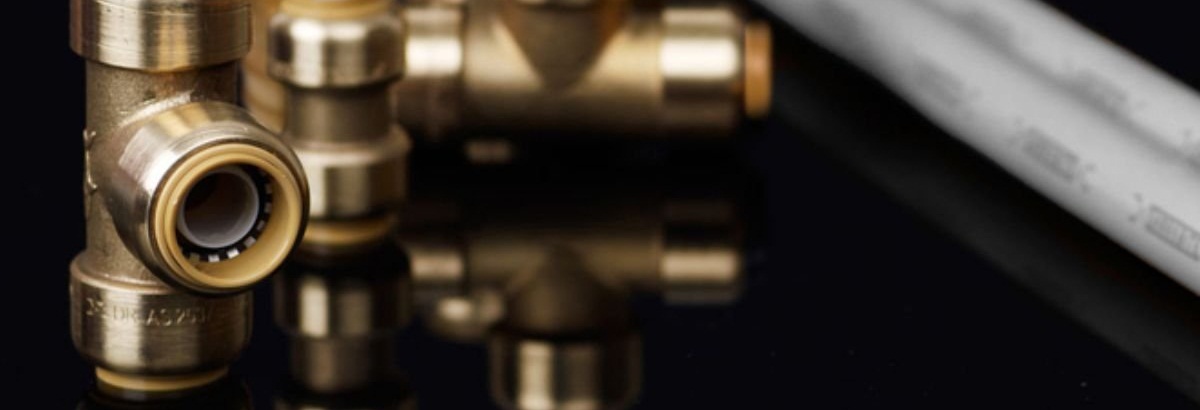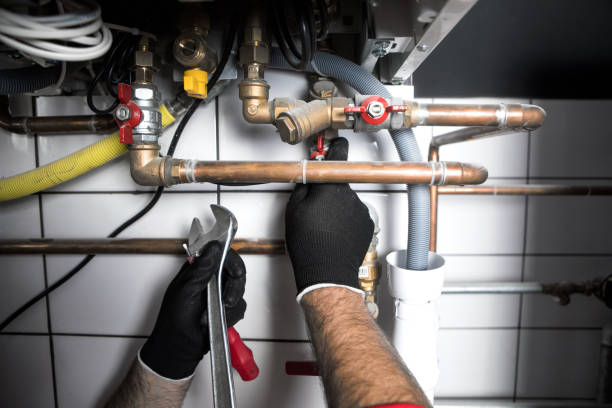What You Need to Know About Your House's Plumbing System Anatomy
What You Need to Know About Your House's Plumbing System Anatomy
Blog Article
Are you currently trying to find tips concerning Understanding Your Home's Plumbing Anatomy?

Recognizing exactly how your home's plumbing system works is essential for every homeowner. From delivering clean water for alcohol consumption, food preparation, and showering to securely getting rid of wastewater, a properly maintained plumbing system is crucial for your household's health and comfort. In this comprehensive overview, we'll discover the detailed network that composes your home's pipes and offer suggestions on maintenance, upgrades, and handling usual concerns.
Intro
Your home's plumbing system is greater than just a network of pipes; it's an intricate system that guarantees you have accessibility to clean water and efficient wastewater elimination. Recognizing its elements and how they work together can assist you avoid expensive repairs and make sure whatever runs efficiently.
Fundamental Parts of a Plumbing System
Pipes and Tubing
At the heart of your plumbing system are the pipes and tubes that bring water throughout your home. These can be made from different products such as copper, PVC, or PEX, each with its advantages in terms of resilience and cost-effectiveness.
Fixtures: Sinks, Toilets, Showers, etc.
Components like sinks, bathrooms, showers, and bathtubs are where water is used in your house. Recognizing just how these components link to the plumbing system helps in detecting troubles and planning upgrades.
Valves and Shut-off Factors
Shutoffs manage the flow of water in your plumbing system. Shut-off valves are critical throughout emergency situations or when you need to make repairs, enabling you to isolate parts of the system without disrupting water circulation to the whole house.
Water System
Key Water Line
The main water line attaches your home to the metropolitan water supply or a personal well. It's where water enters your home and is distributed to numerous components.
Water Meter and Pressure Regulatory Authority
The water meter procedures your water usage, while a pressure regulatory authority makes certain that water streams at a secure pressure throughout your home's pipes system, preventing damages to pipes and fixtures.
Cold Water vs. Hot Water Lines
Recognizing the distinction in between cold water lines, which provide water directly from the major, and warm water lines, which carry heated water from the hot water heater, helps in repairing and planning for upgrades.
Drain System
Drain Pipes Pipes and Traps
Drain pipes bring wastewater far from sinks, showers, and toilets to the drain or septic system. Catches prevent drain gases from entering your home and likewise trap particles that can cause blockages.
Air flow Pipelines
Ventilation pipes allow air right into the water drainage system, preventing suction that can slow water drainage and cause traps to empty. Correct air flow is vital for keeping the integrity of your plumbing system.
Significance of Proper Drainage
Making sure correct water drainage prevents backups and water damage. Frequently cleansing drains pipes and keeping traps can prevent expensive repair services and expand the life of your pipes system.
Water Furnace
Kinds Of Hot Water Heater
Hot water heater can be tankless or typical tank-style. Tankless heating systems warmth water as needed, while containers keep warmed water for prompt usage.
Just How Water Heaters Attach to the Pipes System
Recognizing just how hot water heater attach to both the cold water supply and hot water distribution lines assists in identifying problems like inadequate hot water or leaks.
Upkeep Tips for Water Heaters
Regularly purging your hot water heater to eliminate debris, checking the temperature settings, and inspecting for leakages can prolong its life expectancy and improve energy efficiency.
Typical Plumbing Issues
Leaks and Their Causes
Leakages can take place as a result of aging pipes, loosened installations, or high water pressure. Addressing leakages promptly protects against water damages and mold and mildew growth.
Obstructions and Obstructions
Clogs in drains pipes and bathrooms are often triggered by purging non-flushable products or a build-up of oil and hair. Making use of drain displays and being mindful of what decreases your drains pipes can prevent clogs.
Indicators of Pipes Troubles to Expect
Low tide stress, sluggish drains, foul odors, or uncommonly high water bills are indications of potential pipes troubles that should be attended to without delay.
Pipes Upkeep Tips
Regular Assessments and Checks
Schedule yearly pipes evaluations to capture issues early. Try to find indicators of leaks, rust, or mineral buildup in taps and showerheads.
DIY Upkeep Tasks
Basic jobs like cleaning faucet aerators, looking for commode leaks using dye tablet computers, or protecting revealed pipelines in cool climates can avoid major plumbing problems.
When to Call a Professional Plumbing
Know when a plumbing issue requires professional knowledge. Attempting complex repairs without proper understanding can cause even more damage and higher repair service expenses.
Updating Your Plumbing System
Reasons for Upgrading
Upgrading to water-efficient components or changing old pipes can enhance water top quality, reduce water bills, and boost the worth of your home.
Modern Plumbing Technologies and Their Advantages
Discover technologies like wise leakage detectors, water-saving commodes, and energy-efficient water heaters that can conserve money and lower ecological impact.
Expense Factors To Consider and ROI
Determine the upfront prices versus long-lasting financial savings when considering pipes upgrades. Many upgrades spend for themselves with lowered energy bills and less repairs.
Ecological Impact and Preservation
Water-Saving Fixtures and Devices
Installing low-flow taps, showerheads, and toilets can significantly lower water usage without compromising efficiency.
Tips for Decreasing Water Use
Easy behaviors like repairing leakages quickly, taking much shorter showers, and running full tons of laundry and meals can preserve water and lower your utility expenses.
Eco-Friendly Pipes Options
Consider sustainable pipes materials like bamboo for floor covering, which is durable and eco-friendly, or recycled glass for countertops.
Emergency situation Readiness
Steps to Take Throughout a Pipes Emergency
Know where your shut-off valves are located and just how to turn off the water supply in case of a ruptured pipe or major leak.
Significance of Having Emergency Get In Touches With Helpful
Maintain call details for neighborhood plumbers or emergency services readily offered for fast feedback during a plumbing dilemma.
DIY Emergency Fixes (When Appropriate).
Short-lived fixes like utilizing air duct tape to spot a dripping pipeline or placing a bucket under a leaking faucet can reduce damages till a professional plumbing shows up.
Final thought.
Recognizing the makeup of your home's plumbing system empowers you to maintain it efficiently, conserving money and time on repairs. By adhering to routine upkeep regimens and remaining educated concerning modern-day pipes innovations, you can ensure your plumbing system runs effectively for many years to come.
HOW YOUR PLUMBING SYSTEM WORKS
Which Pipes Do What?
Blue lines = fresh water supply entering the building
Red lines = hot water supply entering the building
Grey lines = pipes carrying waste away from the building and venting pipes carrying gases away from the building (through the roof)
YOUR MAIN PLUMBING SYSTEMS
There are two main plumbing systems that support your home s basic plumbing needs one that brings clean water into your home, and one that sends dirty water away from your home. Connected to the toilet, bath, shower, and other faucets in your home, these two systems keep your water flowing in the right directions.
ACCESSING FRESH WATER
Fresh and clean water is brought into your home through the main water supply line . Filtered through one pipe, this water is pressured to flow into the various fixtures in your home at any given time.
This water can be sourced from a well located on your property, a pond or river (mostly cottages), or, as in most cases, from the city s municipal water treatment centre. However, it is important to note that water that is untreated, such as the water siphoned from ponds or rivers, may not be safe to drink. Personal water supplies always need to be treated for hardness and contaminants before consumed.
MUNICIPAL WATER SUPPLIES
Improve taste and odour
Remove sediment
Eliminate hardness
Reduce chlorine
COLD WATER SUPPLY VS. HOT WATER SUPPLY
Cold water flows into your home or building through the service line, which then distributes hot or cold water to your fixtures. This line is most commonly run through a central column that runs floor to floor. Hot water runs in short and straight pipes as the longer the pipeline, the more heat that will be lost in the transfer. Having shorter pipes also allows residents to access hot water more quickly.
WASTE WATER SYSTEM
Your wastewater system is divided into two parts pipes that send wastewater away from your home and venting pipes that send sewer gas away from your home. Sewage water travels through pipes that flush the water and waste towards local sewers that are operated and managed by your city or town. Most sewer systems rely on gravity to move the wastewater to where it needs to go.
The further away from your toilet or sink, the larger wastewater pipes become. This allows for waste to be disposed of from various parts of your home or business at once without pipe blockages. The angle and flow of these pipes are also essential for keeping your waste pipes clear of build up.
https://harrisplumbing.ca/how-your-home-plumbing-system-works/

HOW YOUR PLUMBING SYSTEM WORKS
Which Pipes Do What?
YOUR MAIN PLUMBING SYSTEMS
There are two main plumbing systems that support your home s basic plumbing needs one that brings clean water into your home, and one that sends dirty water away from your home. Connected to the toilet, bath, shower, and other faucets in your home, these two systems keep your water flowing in the right directions.
ACCESSING FRESH WATER
Fresh and clean water is brought into your home through the main water supply line . Filtered through one pipe, this water is pressured to flow into the various fixtures in your home at any given time.
This water can be sourced from a well located on your property, a pond or river (mostly cottages), or, as in most cases, from the city s municipal water treatment centre. However, it is important to note that water that is untreated, such as the water siphoned from ponds or rivers, may not be safe to drink. Personal water supplies always need to be treated for hardness and contaminants before consumed.
MUNICIPAL WATER SUPPLIES
COLD WATER SUPPLY VS. HOT WATER SUPPLY
Cold water flows into your home or building through the service line, which then distributes hot or cold water to your fixtures. This line is most commonly run through a central column that runs floor to floor. Hot water runs in short and straight pipes as the longer the pipeline, the more heat that will be lost in the transfer. Having shorter pipes also allows residents to access hot water more quickly.
WASTE WATER SYSTEM
Your wastewater system is divided into two parts pipes that send wastewater away from your home and venting pipes that send sewer gas away from your home. Sewage water travels through pipes that flush the water and waste towards local sewers that are operated and managed by your city or town. Most sewer systems rely on gravity to move the wastewater to where it needs to go.
The further away from your toilet or sink, the larger wastewater pipes become. This allows for waste to be disposed of from various parts of your home or business at once without pipe blockages. The angle and flow of these pipes are also essential for keeping your waste pipes clear of build up.
https://harrisplumbing.ca/how-your-home-plumbing-system-works/
I ran across that write up about when exploring the search engines. Are you aware of another individual who is occupied with the topic? Feel free to share it. Thank you so much for going through it.
Detail Report this page